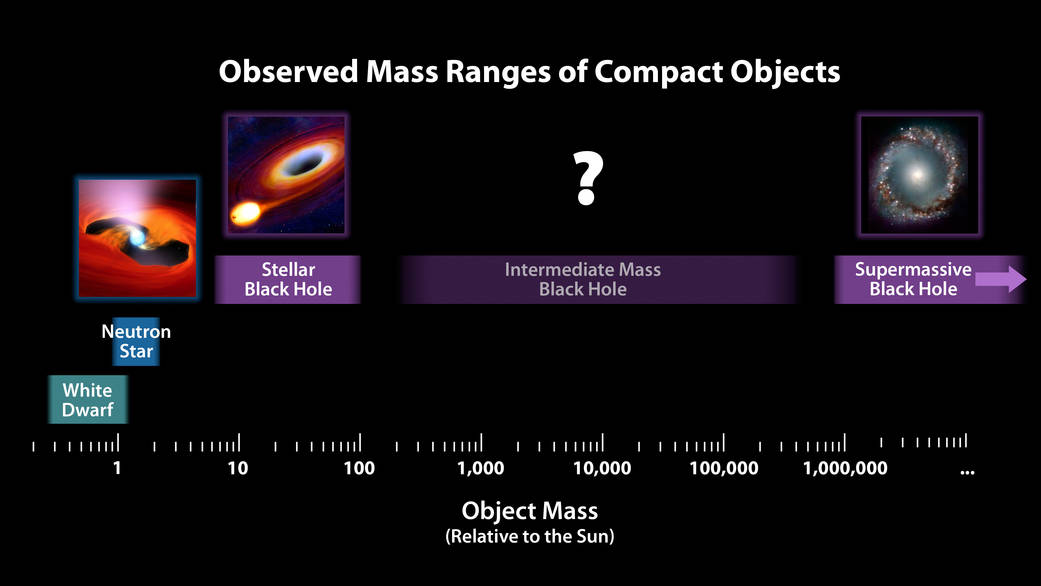This chart illustrates the relative masses of super-dense cosmic objects, ranging from white dwarfs to the supermassive black holes encased in the cores of most galaxies. The first three “dead” stars at left all form when stars more massive than our sun explode; the more massive the star, the more massive the stellar remnant, or compact object, is left behind.
While neutron stars — which are created from the explosions of stars more than about 10 times the mass of the sun — are low in mass compared to black holes, they are still quite hefty and incredibly dense. A spoonful of a neutron star would weigh as much as all of the humans on Earth.
Researchers suspect that a class of intermediate-mass black holes exist, with masses up to more than 100,000 times that of our sun, but the mystery remains unsolved.
Supermassive black holes at the hearts of galaxies are formed together with their nascent galaxies out of giant, collapsing clouds of matter. They can weigh up to the equivalent of 10 billion or more suns. Like all of the objects depicted in this chart, supermassive black holes grow in size as they gorge on surrounding matter.
Image credit: NASA/JPL-Caltech



























